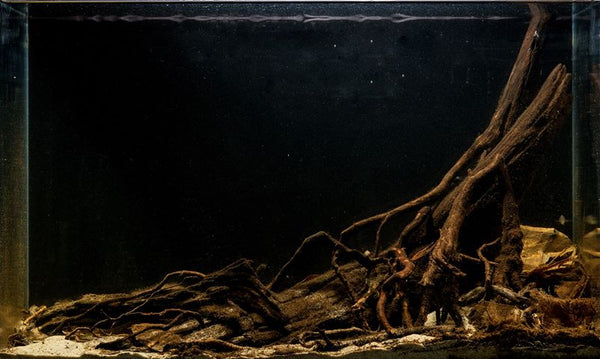- Continue Shopping
- Your Cart is Empty
Windows of opportunity to seek out the "champagne problems" in our aquariums
You've undoubtedly thought about this before, right?
When you keep fishes and play with aquariums for a while, you start to notice little "patterns" in your tank. Not only patterns of activity of the fishes, growth in the plants- stuff like that. Rather, you start noticing times when the tank looks better, acts better...functions more smoothly. These are not alway predictable, but they're the times when we proudly report to our fellow fish geeks, "My tank is just kicking ass right now!"

Not only are these times enjoyable to behold, they represent something else: Windows of opportunity to really study and learn what is going on in the aquarium at the moment that has created this wonderful situation. All too often, we follow through on our regular aquarium practices, maybe make a tweak or two hear and there, and possibly- maybe, not an incremental favorable change or two in the tank along the way. However, it never ceases to surprise me how the "moments of awesomeness" that we treasure so much just kind of sneak up on us, right? Wouldn't it be nice to know what causes them?
One of the best times to notice positive changes in our tanks seems to almost always be right after a water exchange. You must have noticed this a thousand times in your tank. Fishes are more lively, colors are better, often times, spawning activities ensue afterwards. What is it about a water exchange? Is it the dilution or removal of waste, the addition of fresh trace elements, humic substances, oxygen? What could it be?

An interesting thing to do would be to take some water tests for multiple parameters in your tank just before and just after a water change. It's a window of opportunity to get a real-time "before and after" view of what's occurring in your tank. And it's not hard to do.

Or, when you just walk into the room where your aquarium is located and just tell yourself, "Wow, it's looking amazing right now!" That would be an optimum time to look very carefully at your tank; to take some notes, do some water tests...find out exactly what the parameters are in the tank. In fact, by keeping a simple regular log (daily would be amazing, but a few times a week is pretty stellar, too!) and reading it from time to time, you might begin to detect some pattern. Like, "X days after a water exchange and feeding of ____, the fishes develop better color and activity levels are up"- stuff like that.

Having an idea of what and when your tank looks its best will give you the opportunity to replicate those conditions more often. At the very least, it will give you valuable clues as to what is happening in your tank when it's performing at its highest level.Then, you can figure out what to do to keep your tank looking and functioning at this level as often as possible.
It can be challenging, elusive, but stuff like this represents the "champagne problems"- trying to figure our what causes the good "issues" to have with our aquariums. Beats solving disease outbreaks or algae issues or..well, you get what I mean.

And it all starts by taking advantage of the windows of opportunity that are provided when your tank is "kicking ass."
Just something to think about on a Saturday. Enjoy your weekend, and the Holiday Season that is upon us!
Stay inquisitive. Stay engaged. Stay on top of things.
And Stay Wet.
Scott Fellman
Tannin Aquatics









Scott Fellman
Author